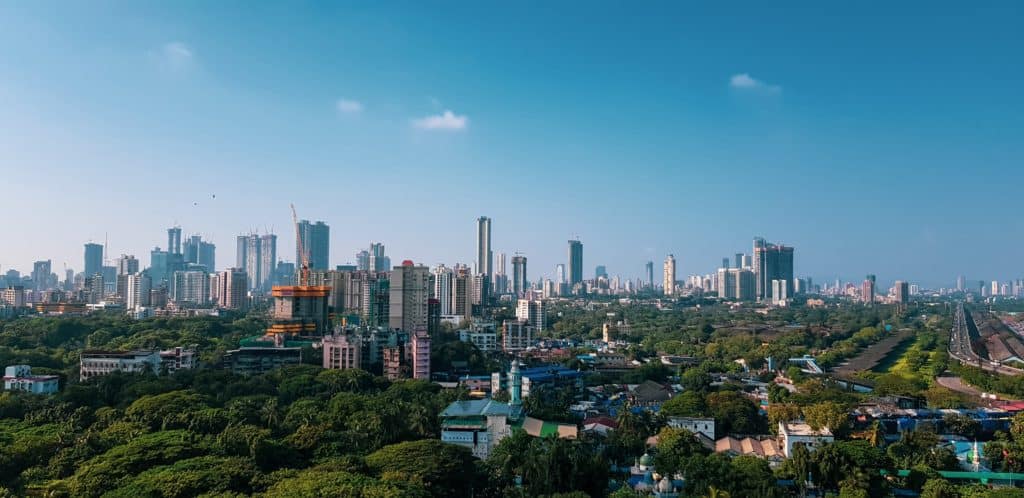Property prices in Mumbai—one of the most expensive real estate markets in the world—have remained constant since 2014. But home ownership has increased only marginally. Many aspire to buy homes in the city but they’re forced to navigate the vast formal and informal rental market for housing.
As high as 87% of respondents in a survey conducted by Noborker.com, a broker-free real estate portal, wanted to buy a house for end use, but prices, despite the stagnation, have remained forbidding.
This is part two of the series where we try to explain why, despite the many unsold flats, prices don’t fall to make housing affordable in Mumbai. Read part one here.
The affordability factor
Affordable housing is popularly understood as housing at a price that’s five times a household income. But Mumbai’s price to income ratio is 38, one of the highest in the world, according to Property Prices Index for Country 2015, Numbeo.com.
A range of reforms aim to tackle the yawning gap between what’s affordable and what’s available.
In 2016, the Indian government demonetised the currency and broke the back of the real estate market that primarily relied on black money. More changes were afoot.
Till 2017, the market was skewed in favour of those who could afford expensive real estate instead of the low-income buyer. If a buyer took a home loan for a property they lived in, they would get a Rs 2 lakh deduction on their taxable income for paying interest on their self-occupied home loan.
But if the property was not self-occupied, there was no maximum limit for tax deduction on the interest. The entire interest amount could be deducted from tax. As a result, “a lot of corporate employees invested in second, third, fourth homes to reduce their taxable incomes. This kept the prices high,” Sandip Kumar, Lead Consultant – Research & Advocacy Services of Liases Foras, a non-brokering real-estate research firm, says.
Owners of these multiple-homes in an irrationally priced housing market not only got rental incomes but also a deduction in taxes. In 2017, the tax deduction was reduced to Rs 2 lakhs across all home loans, which stopped people from buying property as an investment and assembling additional assets.
Regulating real estate
Another major change was implemented by the Maharashtra government after it formed the Maharashtra Real Estate Regulatory Authority (Maha-RERA) in March 2017. RERA aims to reign in developers by mandating that they improve transparency and accountability through quarterly updates and documentation. It also establishes the rights of buyers in case of delay in possession or insolvency.
One of RERA’s biggest advantages is that it stops the developers from indulging in their common practice of diverting funds raised from one project to fund the construction of another project. It requires the builders to keep “70% of the money realised from allottees in a separate account to be used to cover the land cost and construction cost of that project,” according to an explanatory report by KnightFrank. But despite the reforms, no significant changes are visible on ground yet.

Funding Evolves
While the market was dealing with demonetisation, Goods and Services Tax, and reforms proposed by RERA, India’s leading infrastructure finance company IL&FS defaulted on payments to its lenders and triggered panic in the market. IL&FS’s collapse made investors nervous and it subsequently led to higher borrowing costs for Non-Banking Financial Corporations (NBFCs) increasing the cash crunch.
NBFCs are important to Mumbai’s real estate story as they majorly lend to real estate developers.
The crash helped the market discover that “much of the NBFC lending had been channeled to one particular sector, real estate,” Arvind Subramanian and Josh Felman write in a paper titled India’s Great Slowdown: What Happened? What’s the Way Out?
Real estate funding had initially come from private equity funds and banks, but recently “most of the incremental lending has come from NBFCs”, the authors write. “NBFCs accounted for about half of the Rs 5 lakh crore in real estate loans outstanding” in 2018-19″.
A financial institution offers funding after being assured that the borrower would be able to pay back. In the case of real estate, the assumption was that the developer would complete the project, sell the apartments, and clear the debt. But this hasn’t happened. And despite that, prices haven’t fallen significantly.
Subramanian and Felman explain that “while developers could in principle tempt buyers into the market by reducing prices, they couldn’t do this in practice because lower prices would have destroyed the (notional) value of the collateral that they had pledged in order to secure their lending.”

What now?
Over the years, the real estate market has stagnated. Prices haven’t crashed, but have remained more or less the same. Real estate investment is not making anyone rich in Mumbai anymore, but nor have homes become affordable. Due to COVID-19, there has been a 15-20% price correction in luxury homes but the price hasn’t fallen as much for mid-range or affordable flats.
“The profit margins of builders have also shrunk,” Kumar says. “They are no longer making double digit profits.” But for the prices to fall further, someone will have to shoulder a deeper cut. It could be financial institutions or the developers.
Kumar recalls the huge profits developers made during the 2009-12 boom, “Now if they want to sell, they will have to reduce the prices,” he says.